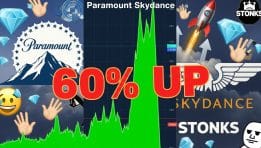Impact on the Global Beer Market
Carlsberg, one of the world’s leading beer producers, has reported a shortfall in its first-half forecasts, sparking concerns about the company’s performance and the broader beer market. This miss reflects changing consumer habits, mounting economic pressures, and evolving market trends. As a consumer-driven brand, Carlsberg’s challenges offer insight into how industry players must adapt in a rapidly shifting landscape.
The economic environment remains a key factor. Inflation and rising operational costs are pushing consumers toward more affordable beer options, creating pressure on premium brands like Carlsberg. While higher prices may protect margins, they also risk driving customers to cheaper alternatives. Competitors that can provide value-driven products and promotions are better positioned to capture budget-conscious consumers.
Shifting Consumer Preferences
Another challenge for Carlsberg is the rising popularity of craft beers and locally sourced products. Many drinkers now seek unique flavors and authenticity, making it harder for large-scale brands to maintain loyalty. To stay competitive, Carlsberg may need to diversify its portfolio, potentially through collaborations or acquisitions in the craft beer segment.
Health-conscious trends are also reshaping demand. Low-alcohol and alcohol-free beers are gaining traction among consumers prioritizing wellness. While other companies have already capitalized on this market, Carlsberg risks losing ground if it fails to innovate in this category.
Regional Market Variations
Global beer consumption patterns differ widely by region. Emerging markets with growing populations present expansion opportunities, while mature markets face stagnation or decline. Understanding local tastes and tailoring products accordingly will be critical for Carlsberg’s growth strategy.
Strategic Areas of Focus
Carlsberg’s forecast miss highlights four critical industry dynamics:
-
Economic Pressure: Inflation and higher costs shifting buyers toward affordable brands.
-
Consumer Trends: Demand for craft and local beers challenging mainstream brands.
-
Health-Driven Choices: Growth in low- and no-alcohol beer consumption.
-
Regional Differences: The need for localized strategies to capture growth.
Strategies for Navigating a Challenging Year
1. Enhancing Product Innovation
Product development will be central to regaining momentum. Carlsberg should invest in market research to identify emerging consumer preferences and launch targeted products.
-
Healthy Alternatives: Low-calorie, low-alcohol, and alcohol-free beers.
-
Seasonal Variants: Limited-edition and festive brews to drive excitement.
-
Collaborations: Partnerships with local breweries or culinary experts for unique offerings.
2. Strengthening Digital Marketing
A strong digital presence can help rebuild brand engagement. Social media, influencer collaborations, and targeted advertising can connect with consumers more effectively.
-
Interactive Campaigns: Contests, polls, and storytelling to boost engagement.
-
Personalized Marketing: Data-driven promotions based on buying behavior.
-
E-commerce Optimization: Streamlined, mobile-friendly online shopping experiences.
3. Focusing on Sustainability
Environmental responsibility is now a major purchasing factor. Carlsberg can enhance its reputation by committing to sustainable practices.
-
Eco-Friendly Packaging: Shift to biodegradable or fully recyclable materials.
-
Water Conservation: Reduce water usage with advanced brewing technology.
-
Carbon Reduction: Target net-zero emissions with renewable energy adoption.
4. Building Supply Chain Agility
Supply chain disruptions remain a global concern. Resilience and flexibility will be key.
-
Supplier Diversification: Reduce reliance on single sources.
-
Local Sourcing: Shorten supply chains and cut transportation risks.
-
Advanced Inventory Systems: Improve forecasting and stock management.
5. Elevating Customer Experience
Retaining loyal customers requires consistent quality and engagement.
-
Feedback Systems: Collect and act on consumer input.
-
Community Involvement: Sponsor events and local activities to build brand connection.
-
Educational Initiatives: Offer beer-tasting workshops and pairing sessions.
Conclusion
Carlsberg’s first-half forecast miss marks a critical turning point for both the company and the broader beer industry. The shortfall underscores the need for adaptability in response to shifting consumer tastes, economic challenges, and global market changes.
By focusing on innovation, digital engagement, sustainability, supply chain resilience, and customer experience, Carlsberg has the opportunity to regain momentum and strengthen its market position. Success will depend on the company’s ability to align with evolving trends while staying true to its brand identity.
Competitors will be watching closely, ready to capture market share if Carlsberg falters. However, if executed well, these strategies could transform current challenges into a platform for renewed growth, ensuring the brand remains a strong contender in the global beer market for years to come.
Comparison, examination, and analysis between investment houses
Leave your details, and an expert from our team will get back to you as soon as possible
* This article, in whole or in part, does not contain any promise of investment returns, nor does it constitute professional advice to make investments in any particular field.
To read more about the full disclaimer, click here- Articles
- •
- 7 Min Read
- •
- ago 5 minutes
 HYDRO ONE Q2 PROFIT RISES ON HIGHER RATES, ENERGY DEMAND
HYDRO ONE Q2 PROFIT RISES ON HIGHER RATES, ENERGY DEMAND
Hydro One reported strong profit growth in the second quarter, driven primarily by higher electricity rates and rising energy demand.
- ago 5 minutes
- •
- 7 Min Read
Hydro One reported strong profit growth in the second quarter, driven primarily by higher electricity rates and rising energy demand.
- Articles
- •
- 8 Min Read
- •
- ago 25 minutes
 THE LIST OF MAJOR COMPANIES LAYING OFF STAFF THIS YEAR INCLUDES ORACLE, NEXTDOOR, INTEL, SCALE AI, AND MORE
THE LIST OF MAJOR COMPANIES LAYING OFF STAFF THIS YEAR INCLUDES ORACLE, NEXTDOOR, INTEL, SCALE AI, AND MORE
Major Companies Announcing Layoffs in 2023: Oracle, Nextdoor, Intel, Scale AI, and More The corporate landscape in 2023 has seen
- ago 25 minutes
- •
- 8 Min Read
Major Companies Announcing Layoffs in 2023: Oracle, Nextdoor, Intel, Scale AI, and More The corporate landscape in 2023 has seen
- Articles
- •
- 10 Min Read
- •
- ago 1 hour
 TRUMP’S PAY-FOR-PLAY CHIPS DEAL GENERATES ALARM AND OPTIMISM
TRUMP’S PAY-FOR-PLAY CHIPS DEAL GENERATES ALARM AND OPTIMISM
Trump’s Pay-for-Play Chips Deal: Balancing Alarm and Optimism IntroductionDonald Trump’s pay-for-play chips deal has ignited a wave of debate, stirring
- ago 1 hour
- •
- 10 Min Read
Trump’s Pay-for-Play Chips Deal: Balancing Alarm and Optimism IntroductionDonald Trump’s pay-for-play chips deal has ignited a wave of debate, stirring
- Articles
- •
- 7 Min Read
- •
- ago 1 hour
 PARAMOUNT SKYDANCE IS BEING CALLED THE LATEST MEME STOCK AFTER SURGING 60%
PARAMOUNT SKYDANCE IS BEING CALLED THE LATEST MEME STOCK AFTER SURGING 60%
Paramount Skydance: The Latest Meme Stock After a 60% Surge Paramount Skydance has recently surged by 60%, earning the title
- ago 1 hour
- •
- 7 Min Read
Paramount Skydance: The Latest Meme Stock After a 60% Surge Paramount Skydance has recently surged by 60%, earning the title












